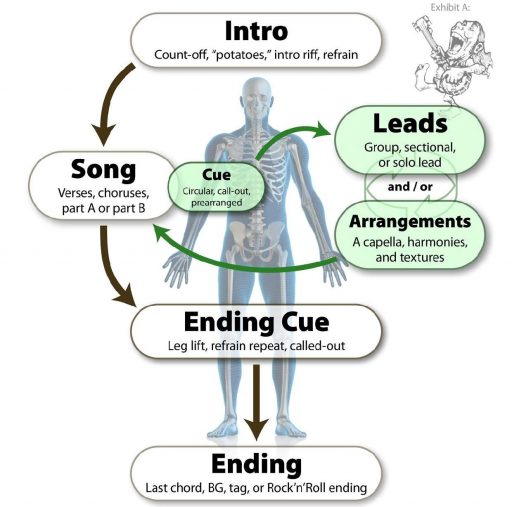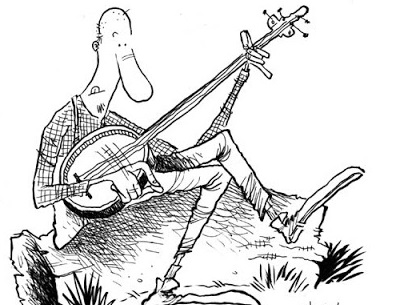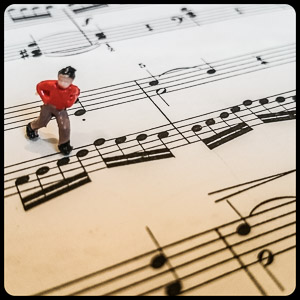![]() Do you wish you practiced more? Do you ever feel frustrated by your lack of progress? Do you sometimes think “maybe I just don’t have what it takes”? Are you about to give up?
Do you wish you practiced more? Do you ever feel frustrated by your lack of progress? Do you sometimes think “maybe I just don’t have what it takes”? Are you about to give up?
If you do, then the chances are that you are in a Toxic Relationship… with your music. Yep, It’s not you, its not your guitar, it’s the relationship that’s is the problem! And guess what, this is actually good news! Why? Because you can’t change who you are, and you can’t change your guitar (much), but you CAN change the relationship with your instrument.
And once you change this relationship, all your music problems will melt away like butter on a hot griddle.
So let’s get started fixing this, and let the healing begin…
First, in case you aren’t sure if you are indeed in a toxic Musical Relationship, let’s go over five common “red flags” that can indicate a problem:
- Red Flag 1: You always feel like you never practice enough
- Red Flag 2: You are not happy with your progress
- Red Flag 3: When you think of your instrument, your feelings are negative, not positive
- Red Flag 4: You compare yourself to others (and generally feel like they are better than you)
- Red Flag 5: You continually change songs, instruments and goals; you have “musical ADD”
Another symptom of being in a Toxic Musical Relationship are beliefs that limit you, that you probably acquired early in life. Here are some examples:
Limiting Belief: I need to practice a lot, like every day, to get any better
Limiting Belief: I have to learn to read music to play an instrument
Limiting Belief: Some people are naturally talented, but I am not
Ring any bells? Well don’t worry if it does, because we’re about to show you how to free yourself from these problems and create the Positive
![]()
Musical Relationship that you deserve. And the first step is to realize that this relationship is all in your mind. It has nothing to do with how well you play or how much you practice, those are just the physical things. The important part is how you are thinking and feeling about this. You know, in your mind 🙂
And it is in your mind that you will make the first huge step forward: learning to Let Go! Let go of what, you
ask. You must let go of fixing any of this, let go of fighting it, let go of winning! This may sound contradictory, but it is as true as the laws
of physics. Until you let go and give yourself a break, you will not have the clarity and presence of mind to follow the steps we are about to show you.
So, take a deep breath and LET GO….
Now, we’ll need you to do the following: Agree that you are now taking a break from your musical struggles, and putting it all on pause. Yep, we are going to be starting over. And not just continuing what wasn’t working, but instead starting with a clean slate! This is the first noble truth of a healthy Musical Relationship: Taking time off is just as important as time spent practicing! Yes, if you don’t give your brain regular periods of down time, it will get overworked, overwhelmed and frustrated.
Now that you’re OK with taking a break, and your stress levels are down, let’s address those Red Flags and Limiting Beliefs we mentioned earlier:
- Red Flag 1: (You always feel like you never practice enough) = Yes you do! It’s not about “how much” you practice, but “how fun it is!”
- Red Flag 2: (You are not happy with your progress) = That’s because your expectations are too high! Lower them and have more fun
- Red Flag 3: (When you think of your instrument, your feelings are negative, not positive) = That will change when you follow the “relationship Rules” (see graphic below)
- Red Flag 4: You compare yourself to others (and generally feel like they are better than you) = That will change when you follow the “relationship Rules” (see graphic below)
- Red Flag 5: (You continually change songs, instruments and goals; you have “musical ADD”) = Guess what: this is just fine! Follow the Fun!
Limiting Belief: (I have to practice a lot, like every day, to get any better) = Nope. You can practice for 15 minutes a week and get better
Limiting Belief: (I have to learn to read music to play an instrument) = Nope. Some of the best musicians in history didn’t read music (Google it!)
Limiting Belief: (Some people are naturally talented, but I am not) = Nope; There is no such thing as “talent”, just desire, time and patience.
Take you time to digest all of this, we know it may seem controversial. But we have seen hundreds of students achieve their musical dreams simply by improving their Musical Relationship. So let’s give you the magical “Ten Commandments” of a healthy Musica Relationship, here we go…
![]()
Your Musical Relationship – the Ten Commandments
I. Take Breaks! This is probably the hardest to accept, because of our conditioning. When you are frustrated, take a break. When you think “I’m not practicing enough”, say “I’m just taking a break, I’ll be back eventually!” Seriously, brain science has proven that we need time away to assimilate new information, so ease up on yourself and take more breaks.
II. Joy Over “Progress” This means you need to start prioritizing having fun over “serious practicing”. Ya we know this sounds sacrilegious, but it’s true. Think of it this way: If you enjoy your practicing, you’ll want to do it more, and progress will happen naturally. But if all you think about is progress, then you’ll kill the joy. Yes we know there are times when you need to have discipline and challenge yourself, but that should not be the majority of the time. So, shift your practice time to the songs that excite you and bring you joy, and you’ll see more progress!
III. Baby Steps This phrase is a bit cliche, but nonetheless very true. Here’s the deal: if you try to learn too much at once, you will get frustrated and quit. If you try to learn material that is above your level, same problem. You need to have small goals, like “learning a G chord”, or a new strumming pattern, you know, Baby Steps! Don’t try to take on Bohemian Rhapsody 🙂
IV. Have Low Expectations In addition to limiting yourself to Baby Steps, you should also not expect too much from these steps! Remember, learning music is a lifelong process that takes time, and you are in this for the long haul. Dont be demanding of yourself, instead be happy with whatever results you achieve. Accomplishing one small thing that make you happy is always better than trying too much and getting disappointed.
V. See the Big Picture Unless you have an upcoming concert (and we get the feeling you probably don’t), then relax… you have the rest of your life to get ready! You are on the slow track to success, and you need to have trust that you are indeed getting better, over time. Just like a tree, you are growing slower that you can see, but you are indeed getting better over time. Learning music is not something you accomplish, its something you add to your life, like a puppy or a garden. Think of how much better you’ll be in several years from now, IF you stick with it and take your time. So relax and enjoy the ride!
VI. Follow the Fun This is a continuation of II, “Joy over Progress”. Now that you have accepted the truth that your instrument should bring you joy, you’ll want more of that! How do we create that? You simply have to identify the kind of music or musical activities that are fun for you, and seek them out. Let’s say you go to a Reggae festival and have a great time, well then why not learn to play a Reggae beat?! Or maybe your friend brings a guitar to a party and next thing you know there is a rousing jam session. Why not learn some of those songs and jump in next time? So whatever music you think is FUN, follow it.
VII. Don’t Compare One thing you learn after years of making music is this: you are always in the middle! There is always someone better than you, and always someone note as good. So instead of comparing, why not simply help those who are below you, and learn from those who are further down the road? Comparison is the sister of self-judgement, and a joy killer. Just be happy exactly where you are at, and everyone will become your ally.
VIII. Frustration = STOP We often think that frustration is a necessary part of learning, but in fact it is a red flag. Think of it this way: if you were doing it correctly, then you would not get frustrated! Frustration is just a symptom of an ineffective method. If you are trying to learn material over your head, or guilt-tripping yourself for not practicing enough, or trying to play for too long, or not taking breaks… guess what. You’re going to get frustrated! And this is actually a good thing, because it is a red flag telling you to stop and change your approach. SO when you get frustrated, please STOP, go over these commandments, and start again.
IX. Have a Good Teacher We could have worded this “Don’t have a crappy teacher!” but we wan’t to keep it positive. However that is also true! The problem with many (even most) music teachers os that they are mired in old belief systems that steal your joy. if you have a teacher telling you to “practice more”, or “be more disciplined” or waiving a ruler at you, you are in the wrong place! Get out of there, quick. A real teacher will inspire you, will help you to find your own musical path and thereby enjoy the process. So, if you or someone you know has a less-than-optimal teacher, politely discontinue your lessons and come study with us here at JamAlong! (We always offer a FREE Zoom lesson to newbies, click HERE to redeem that).
X. Share With Friends Can you imagine a hobby that you never discuss with your friends? Even if it is knitting, you still want to show your finished scarf to someone, right? The more you tell folks about your musical adventures, the more support you will receive, and maybe even get others to join you in paying music together! And once you start “jamming” together, your playing will take off like a jet plane and you wont need to “practice” at all… because you’ll be playing all the time! So whether its just talking about different types of guitars, or planning a SUnday BBQ and jam sesh, harness the power of musical friendships to take your playing to the next level…

 Just like many areas where science and art intersect, there is a preponderance of theories and formulas in Music Theory. From the classic Theory that you will learn as a music major in just about any college, to the more obscure theories that you have to know to play jazz, music theory has many branches.
Just like many areas where science and art intersect, there is a preponderance of theories and formulas in Music Theory. From the classic Theory that you will learn as a music major in just about any college, to the more obscure theories that you have to know to play jazz, music theory has many branches. Few subjects in music have the same ominous portent as the phrase “reading music”. Sadly there are many of us who have nothing but bad memories on the subject, like a spectacle wearing piano teacher forcing us to memorize “every good boy does fine”. Or being in highschool band and having to sight-read awful marches from pages stained with the tears of former members.
Few subjects in music have the same ominous portent as the phrase “reading music”. Sadly there are many of us who have nothing but bad memories on the subject, like a spectacle wearing piano teacher forcing us to memorize “every good boy does fine”. Or being in highschool band and having to sight-read awful marches from pages stained with the tears of former members. Often the last thing we think about when learning an instrument is our posture. In the excitement (or torment) of practicing, our attention is drawn to “battle zones”: aching fingertips, bad sounding notes, difficult passages that we are struggling with, and so on. Posture and form go out the window, and understandably so.
Often the last thing we think about when learning an instrument is our posture. In the excitement (or torment) of practicing, our attention is drawn to “battle zones”: aching fingertips, bad sounding notes, difficult passages that we are struggling with, and so on. Posture and form go out the window, and understandably so. Unlocking scales on the banjo is the secret to breaking out beyond bluegrass, and being able to sound great in all kinds of new music. Let’s say you are a decent picker, and can play in Scruggs Style and know how to play backup and lead. Perhaps you even have some melodic style fiddle tunes under your belt, or some hot single-string licks. But your playing still sounds “bluegrassy”, and there are times when you lay awake at night thinking “what else is out there? Why cant I play more blues, or rock, or jazz on my banjo??”
Unlocking scales on the banjo is the secret to breaking out beyond bluegrass, and being able to sound great in all kinds of new music. Let’s say you are a decent picker, and can play in Scruggs Style and know how to play backup and lead. Perhaps you even have some melodic style fiddle tunes under your belt, or some hot single-string licks. But your playing still sounds “bluegrassy”, and there are times when you lay awake at night thinking “what else is out there? Why cant I play more blues, or rock, or jazz on my banjo??”

 When most of us hear the term “composer” we see a dude with a white poofy wig holding a quill pen, etching notes onto a parchment, usually by candle light.
When most of us hear the term “composer” we see a dude with a white poofy wig holding a quill pen, etching notes onto a parchment, usually by candle light.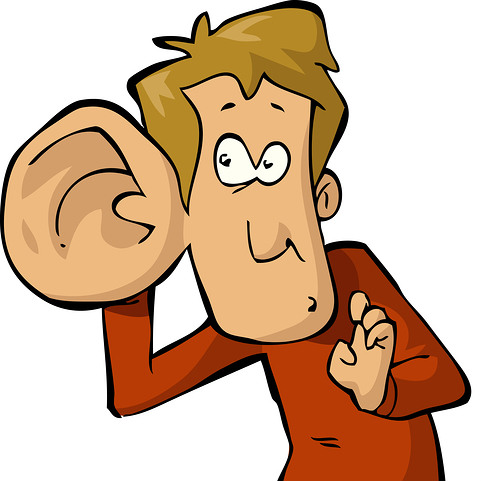 Imagine if you could show up to a jam, sit down and play along with every song…without knowing them!! Imagine if you didn’t need charts, but could listen for a few minutes and then jump in, hitting all the right chords…is this possible? Absolutely.
Imagine if you could show up to a jam, sit down and play along with every song…without knowing them!! Imagine if you didn’t need charts, but could listen for a few minutes and then jump in, hitting all the right chords…is this possible? Absolutely. One of the most mysterious and misunderstood elements in Folk, Bluegrass and Country music is the “Lick”. Explained simply, a Lick is a short phrase of music, usually composed ahead of time, that is used to ornament the song that you’re playing. No, it’s not a scale or arpeggio, it’s like a miniature composition that is designed for a specific key or to highlight a particular technique. Most Licks are two measures long, but there are also scores of Licks out there that are one measure, or even four measures. For the record, when a Lick gets to be longer than four measures it is generally considered to be a “run”, or a combination of smaller Licks.
One of the most mysterious and misunderstood elements in Folk, Bluegrass and Country music is the “Lick”. Explained simply, a Lick is a short phrase of music, usually composed ahead of time, that is used to ornament the song that you’re playing. No, it’s not a scale or arpeggio, it’s like a miniature composition that is designed for a specific key or to highlight a particular technique. Most Licks are two measures long, but there are also scores of Licks out there that are one measure, or even four measures. For the record, when a Lick gets to be longer than four measures it is generally considered to be a “run”, or a combination of smaller Licks.



 Yes, yes, we know, we’re always bugging you here at JamAlong to get out there and jam with folks. “It’s the only way to learn!” we say, “It’ll get you there quicker than music lessons” and the the like. And although it is true, to be completely honest there are a few problems with this idea as well. For starters, not everyone has a gaggle of jammer friends they can call up whoever they feel the urge to play music.
Yes, yes, we know, we’re always bugging you here at JamAlong to get out there and jam with folks. “It’s the only way to learn!” we say, “It’ll get you there quicker than music lessons” and the the like. And although it is true, to be completely honest there are a few problems with this idea as well. For starters, not everyone has a gaggle of jammer friends they can call up whoever they feel the urge to play music.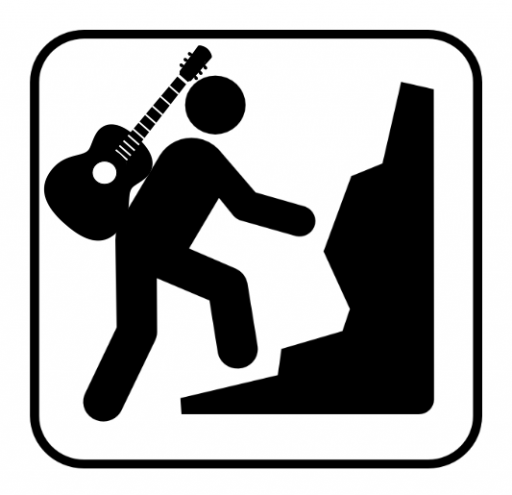 learn to jam, we would have one lesson and then be pushed off a cliff into a stormy sea. It’s true. There is a ton of material on how to operate your given instrument, and then plenty of chances to attempt what you learned in a group setting and watch it fly to pieces, raining down burning shards of your expectations.
learn to jam, we would have one lesson and then be pushed off a cliff into a stormy sea. It’s true. There is a ton of material on how to operate your given instrument, and then plenty of chances to attempt what you learned in a group setting and watch it fly to pieces, raining down burning shards of your expectations. at sound is an essential part of the universe, and of our very self awareness, is not new. Humans were in fact fashioning musical instruments as far back as Paleolithic era, as evidenced by the discovery of bone flutes in southern Germany that are over 40,000 years old. Yes, we humans have been fascinated with sound and music making for quite some time.
at sound is an essential part of the universe, and of our very self awareness, is not new. Humans were in fact fashioning musical instruments as far back as Paleolithic era, as evidenced by the discovery of bone flutes in southern Germany that are over 40,000 years old. Yes, we humans have been fascinated with sound and music making for quite some time.